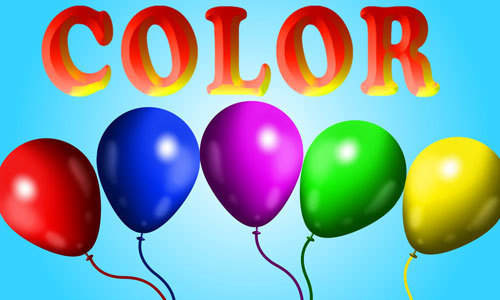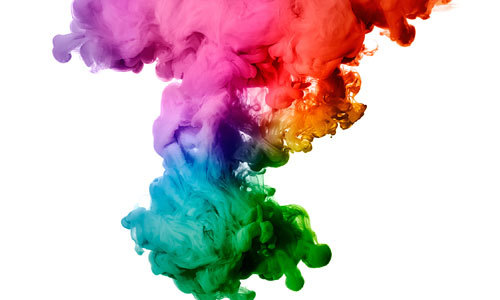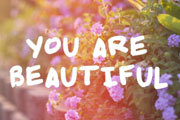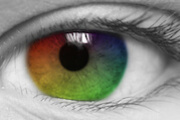Colors represent different feelings and present us with certain images that we associate with that color. We all react to color in different ways. Some of us dislike certain colors, but love other colors. Color psychology tells us that our instinctive color preferences reveal the deepest parts of our personalities. What color do you subconsciously relate to? Color is an expression of your identity. Color is a vital, powerful tool of communication and it is tied to all sorts of things.
By taking the time to think about each color and what it represents or how it is linked to the world, we too are taking a moment to look at ourselves and what we associate things with.
What Can Color Do?
 What does colour say about you?
What does colour say about you?
#1 It Can Affect Mood
We all have our color preferences and personal interpretations about color. Color has a power over us. For example, this can be the result of color affecting our moods. Or we choose colors that have a positive impact on our mood. You’ll often hear people say things like, “I wore pink because I wanted to be springy” or “I wore all black so I don’t stand out.” We all know what different colors are associated with, and what they represent to us personally.
- The color red can boost your self-esteem
- Yellow can put people in a better mood or mellow them out
- It is proven that blue lowers blood pressure and slows down your heart rate. Blue is related to relaxing and meant to be soothing.
 Colors are full of symbols.
Colors are full of symbols.
As we also know about colors, mixing them together can create new colors. If you mix the bright color of yellow with the soothing color of blue you get green, which is a very satisfying color for many people. Potentially because they see green as the color of playful pastures, in Canada it is the color of money, and the color of being in the outdoors lost in the greenery.
Environments are also affected by color. They use pastel tones on the walls of mental health units to ensure that patients feel at ease, calm and okay. A nursery would also be painted in a color suitable for the baby.
When choosing colors consider how they will mix and sit with the other elements and what impact that it will have on the mood of your audience or yourself.
 Embrace the colors that you love.
Embrace the colors that you love.
#2 Colors Communicate Invisibly
Wassily Kandinsky was a big deal in color theory. He was a Russian painter and art theorist who is often considered the founder of abstract art. Kandinsky believed these colors communicate the following aspects:
- Yellow – warm, exciting, happy
- Blue – deep, peaceful, supernatural
- Green – peace, stillness, nature
- White – harmony, silence, cleanliness
- Black – grief, dark, unknown
- Red – glowing, confidence, alive
- Orange – radiant, healthy, serious
 Colors means different things to different people.
Colors means different things to different people.
#3 Color has Cultural Significance
Various clouds mean different things in different places. The color purple symbolizes mourning in Thailand. In western culture, the color is associated with royalty, luxury, wealth, and even magic. Thai Airways has their brand color as purple. This could be seen as an error because purple is a color of mourning in Thailand.
The theory is that the Thai Airways website isn’t aimed at locals but at tourists. If westerners view the site and see purple it will associate Thai Airways with values such as luxury and comfort not mourning.
Other examples are:
- Black is a color of mourning in western cultures
- In Japan black is a color of honor and white is the color of mourning
- In the west, red represents danger, love, passion
- In India, red it is a color of purity, in China, red it is a color of good luck and in South Africa, red it is a color of mourning
- Yellow represents courage in Japan, mourning in Egypt and hope in the West
 Always stay true to color.
Always stay true to color.
#4 Color can be Inspired by our Surroundings
We live in a colorful world, a world that allows us to express our colors freely. The color green for example could make you feel at home because you love the outdoors. The color pink could make you nostalgic because you miss doing ballet. Every color can be placed with a symbolic value, and often it’s the symbolic values we ourselves place upon colors. For example, you may never wear too much black because you think it’s dark or you can’t wear enough black because it’s your favorite color. Color is also relative to different styles, as some people wouldn’t be caught dead wearing certain colors.
 What's your favorite color?
What's your favorite color?
Color is a complicated subject with many components. It has the power to draw symbols, convey values and tell stories. Colors have meaning, and allow us to express ourselves. As we’ve learned, colors mean different things in different countries just as they mean different things to different people. We may be opposed to or drawn to a particular color, but we have to wonder, is the color we are choosing to wear reflecting our mood? Sometimes we want to be shadows, unseen, and discrete, on those days we might wear hats and dark colors. Though we know that bright colors are generated to spark attention and ignite positive feeling. It really depends on your style and your color preference.
Have Your Say
What is your favorite color? What feelings do you associate with other colors? Comment below.

































